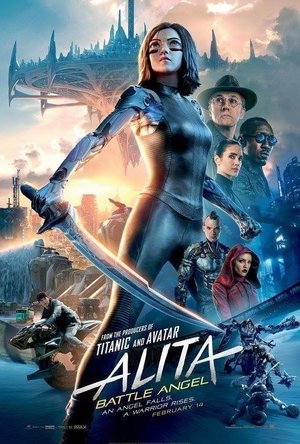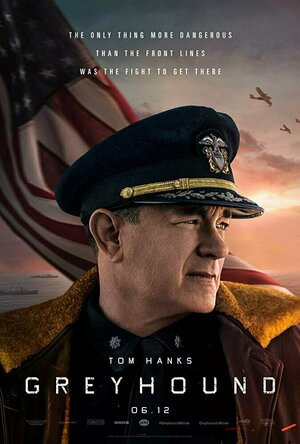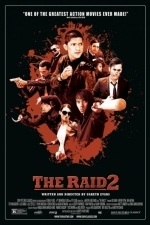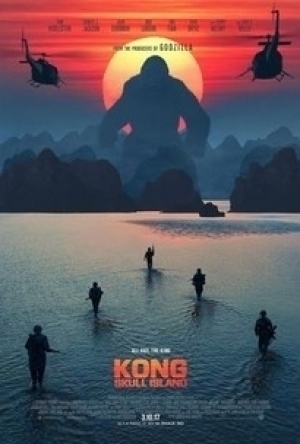
Tae Kwon Do Martial Arts Self Defense and Basics
Sports and Health & Fitness
App
"Are you prepared? For The Top 10 Unarmed and Weapon Attacks You Will Encounter On The street... ...

Sniper Fury Target
Games
App
5/5 “Best graphics and as good as Call of Duty.” 5/5 “Fabulous game with breathtakingly...
Lee (2222 KP) rated Alita: Battle Angel (2019) in Movies
Feb 8, 2019 (Updated Feb 8, 2019)
It’s 2563, and we’re in Iron City. Dr Dyson Ido (Christoph Waltz) is scavenging among a huge scrapyard, looking for cyborg spare parts that he can make use of, while fresh metal and rubbish rains down from Zalem – a man-made, floating city sitting in the sky above Iron City. 300 years ago there were many of these floating cities but following a brutal war all of them except for Zalem perished. During that time though, the elevator leading up to Zalem was destroyed, and these days only the ‘pure’ inhabitants of Zalem are permitted there. Nobody from Earth is allowed to visit and if anyone comes down from Zalem, they’re not allowed back. It’s to try and avoid any contamination from entering Zalem. If you’ve seen the Matt Damon movie Elysium… well, then it’s a bit like that really.
Among the usual items, such as robotic hands and eyeballs, Dr Ido discovers Alita, or rather the core of Alita – lying lifeless and broken, with only a battered hairless head and upper torso remaining. He takes her back to his laboratory/home, where he works as a cybernetics expert, repairing and upgrading the inhabitants of Iron City who are either cyborgs or humans with cyborg body parts. Along with his assisting nurse, and using a robotic body that had been previously built for his now deceased daughter (this gets briefly explained later), they rebuild her, giving her the name Alita (also his daughters name). Alita awakens later in a nice comfortable bed, in what was presumably Dr Ido’s daughters room. She has no memory of her previous existence and sets about experiencing all the sights, sensations and tastes that human life and Iron City has to offer, exploring and striking up a friendship with local boy Hugo and his group of friends. But, as the name of the movie implies, this cyborg was built for battle, and it’s not long before Alita begins to remember who exactly she used to be and just how good at kicking ass she is.
A quick word about the visuals, as they are by far the best thing about this movie. Iron City, despite clearly being a futuristic world, is certainly not dark or bleak looking in the way we’re used to with similar movies of this genre. Many of the early scenes take place during daylight hours and the city is a vibrant, bright, bustling home to thousand of humans and cyborgs. We get to go beyond the limits of Iron City – the city walls, out to the badlands beyond, and as you’d expect from Cameron a lot of thought and detail has gone into mapping out and building this world. The cyborgs and the other robots we meet are all pretty standard for a movie of this kind, but it’s Alita that is the most impressive. Much of this is down to the incredible CGI involved in making her look as realistic as she does, but a lot of what makes her so enjoyable and believable is down to Rosa Salazar, whose motion captured performance helps bring her to life. The visuals are obviously at their most impressive during the battle scenes involving Alita – where so many movies with heavy CGI battles end up as just a messy whirlpool of characters and action, that’s certainly not the case here. Slick, inventive and exhilarating choreography allowing you to actually track and follow every single character and action in crisp detail. It’s refreshing and impressive, even more so when watched in 3D and particularly so during the fast paced Motorball scenes featured towards the end of the movie.
Outside of the visuals though, other characters and plot lines don’t seem to stick so well, which is disappointing considering the rich source material available to the film makers. Alita: Battle Angel suffers from inconsistent pacing, dialogue that is clunky and exposition-heavy and there are many times when the accompanying soundtrack just felt distracting to me, out of place with whatever is currently happening. Christoph Waltz, Mahershala Ali and Jennifer Connolly all seem overqualified and underutilised, and the romance between Alita and Hugo is unnecessary, and at times annoying. It feels like it’s trying to cram too much story into its two hour run time, resulting in plot holes and frustrations later on. And there is even a cliffhanger ending – frustrating in that it feels as though we haven’t even properly concluded this part of the story and we’re now being left to wait should a sequel ever be given the go ahead.
I found much to enjoy with Alita: Battle Angel, and would gladly go see a sequel or two, should they get made. It’s enjoyable at times, and dazzling to look at, but overall it did leave me feeling a little bit frustrated and disappointed.
Phil Leader (619 KP) rated The Long Utopia in Books
Nov 20, 2019
The second book, The Long War explored the political theme further with the superpowers attempting to control the equivalent populations on the other Earths - and mostly meeting resistance to any governance at all. It also introduced the concept of the Next, a super intelligent sub-species of humanity.
The third book, The Long Mars had further incredible iterations of Earth on display and also did the same thing for Mars on a quest to discover a material to use to make a space elevator. The Next also started to organise and to separate themselves from the rest of humanity.
Each of these took the original concept and gave us more interesting worlds and lifeforms. Although the law of diminishing returns was starting to bite - Earth fatigue if you like - the main interest was in seeing what new ideas the authors could wrestle for each new Earth or Mars.
That is where this book fails. It is almost exclusively interested in only one copy of Earth, which comes under direct threat. All the usual suspects - Joshua, Sally, Lobsang and the Next must join forces to prevent a catastrophe threatening the whole Long Earth. There is also a sub-plot involving Joshua's antecedents which although interesting in itself is essentially a Long Earth short story of no relevance to the rest of the plot.
Whereas the previous books had a sense of wonder at each world, this loses that completely. It is in fact a completely standard science fiction story and probably would have been better told as a stand alone story rather than being shoe-horned into the Long Earth concept, which doesn't actually add anything interesting to it. It reads very much like Baxter wanted to write a story about a Dyson motor and as he was contracted to write a Long Earth novel, that's what was used. Unfortunately even this story is not well told with stilted and flaccid dialogue, zero character development and no dramatic tension at all. It was a real struggle to read in places, there is no zip or flow to the story or writing.
Various bits of the plot don't make a great deal of sense and the ending is very lame indeed with the chain of Long Earth worlds being essentially fixed by just thinking about it. The Next decide that Stan Berg, a newly discovered one of their kind, is the only one to 'fix' this despite basically no contact. They are supposed to be super intelligent and think many moves ahead but this just struck me as absurd.
Overall, I would only suggest that Long Earth completists read this. Those who enjoy the Long Earth for its diversity and novel concepts would be better off leaving this one on the shelf.

Weaphones WW2: Firearms Simulator Free
Games and Entertainment
App
Experience the weapons of World War II like never before. Weaphones WW2 Free Edition redefines what...

Weaphones WW2: Firearms Simulator
Games and Entertainment
App
Experience the weapons of World War II like never before. Weaphones WW2 Edition redefines what the...
Lee (2222 KP) rated Greyhound (2020) in Movies
Sep 2, 2020
Set in 1942, Hanks plays Captain Ernest Krause, responsible for one of only a handful of warships as they escort and protect an even larger number of merchant vessels making the journey across the Atlantic Ocean with vital supplies for England. They will be entering what’s known as ‘the black pit’ – a stretch of Ocean too far out at sea for any aerial cover to be provided by the countries on either side. For a few days, they will be on their own, and at the mercy of any German U-boats they may encounter.
Greyhound wastes no time in landing us right in the thick of it all, joining the crew as they enter the black pit, and sticking with them while they attempt to make it to relative safety on the other side. Obviously, it’s not long before a number of U-boats target the fleet of vessels and begin trying to pick them off in a tense game of cat and mouse at sea.
There is a LOT of nautical jargon in Greyhound and twenty minutes in, I was already feeling exhausted just trying to follow it all and gain any kind of enjoyment out of the movie. Despite throwing the occasion title up on screen to tell us which vessel we’re looking at out on the gloomy CGI seas, it’s also not always clear which ship is which, or who’s firing at who either. That attention to detailed dialogue really doesn’t let up one bit either, making what is only a 91 minute movie feel so much longer.
By throwing us straight into the action, we’re also given no time to learn or even care about any of the characters. Krause is only given a couple of brief flashback scenes, showing us with his partner two months earlier, played by Elizabeth Shue. Other than knowing this is his first Atlantic crossing, and that he is fully committed to the job in hand, refusing to eat any of the hot meals regularly brought to him by the ship’s cook, we’re provided very little information about our Captain.
The crew are also there just to fire off updates to their Captain and respond to his commands, providing no character development whatsoever for them either and giving us nothing to feel invested in, other than a desire for them all to make it safely to England.
With the focus of the movie entirely on the crew and setting of the Greyhound, we only hear from other characters via radio – calls for support from the other vessels, or psychological jaunts from the Germans on the U-boat. Again, by not giving us the viewpoint of any other side or vessel, it all makes for a very one dimensional and dull ride. Definitely not one of Tom Hanks finest.
Gareth von Kallenbach (980 KP) rated Company of Heroes 2 in Video Games
Jun 19, 2019
For those that are not familiar with the series, the game task players to take command and construct various military units in an effort to seize key installations and strategic points, destroy enemy troops, and accomplish various strategic tasks. This is easier said than done as the enemy AI is extremely tenacious and adaptable and like battlefield situations, commanders are often forced to improvise and think on the fly one the unexpected happens.
This timeout the game is set in Russia and is told mainly through flashbacks during an interrogation of the disgraced Russian commander. Battles such as Stalingrad and other key elements of operation Barbosa are re-created and the initial battles are focused mainly on slowing the German advance as well as eliminating key resources that might be captured by the enemy.
As the game goes on, the weather becomes an new challenge as the fears Russian winter that proved to be so detrimental to the German forces is an element that must be contended with at all times. Players will not be able to send units on foot to capture very strategic elements or mission objectives without having them freeze to death. The solution to this problem is to have engineering units take a break from constructing buildings in order to create campfires. Players that are left out in the cold too long have a limited amount of time to reach the safety of a campfire or vehicle before they will freeze to death. Needing to ensure that the path to an objective is either stocked with appropriate amounts of fires or save for a vehicle to use is a key element to the strategic points of the game.
Being able to call in airstrikes as well as do more elaborate flanking maneuvers is definitely a high point of the game which adds to the strategy. You want to be very careful about massing your units in one place because to do so would invite an aerial or artillery barrage upon them. As in the previous games, players can take sanctuary in buildings which provides them ample opportunity to snipe at opposing targets. This is not without its limitations though as well-placed assaults including attacks with flamethrowers can soon turn the advantage into a disadvantage as troops may find themselves in a building collapsing around them.
Unlike other games of this type which are heavy on resource gathering to provide necessary funds for additional units, the game towards players points for capturing, holding, and destroying various strategic objectives. The better one does then the more units that will be made available to them. I really enjoy the heavy machine guns, mortar teams, and the cannon fodder conscripts squads, but what really makes the game shine is the ability to call in airstrikes and your armored units. As mentioned earlier about the difficulties in combat in the snow conditions. The game takes weather into account even to the point of providing hit points to the ice. An enemy that is attempting to bring across units supported by armor could be in for real surprise by strategically placed mine or a well-placed shell. Once at the ice becomes weak, then players can use this to their drainage to quickly dispatch units who fall through damage ice with a little bit of urging from their weapons.
Graphically the game shines and I really enjoy being able to use the mouse wheel to zoom into units and get an up close and personal look at them in action. Seeing them diligently go about their tasks be at construction or loading shells into their weaponry is not only beautiful to behold but adds to the sense of immersion. The sites of the game as well as the audio are spot on as key historical elements have obviously been paid attention to in the creation of this game. For example players talk about not seeing sugar in ages or how there are not enough weapons to go around and are instructed to simply head to the enemy and salvage what they can on the battlefield. There is also the element of brutality were troops are told that should you retreat from the enemy you’ll be shot and killed by your own commanders and that objectives must be completed regardless of the cost.
The game offers significant challenge to players of all levels and as such a skill level setting is in place which will allow you to try to find a happy medium for your style of play. There are also ample online opportunities for the game as not only can you play with your friends, you can create custom matches or to randomly assign matches which can pick you and other flesh and blood players up against the computer controlled opponents.
I especially like the ability to directly stream my gameplay to twitch TV as this is an element that we’re definitely looking to take advantage of in the future especially since live streaming is a key element of the upcoming gaming consoles as well .
The path finding in the game is very solid and although there are times when units can become a bit bogged down it is extremely minor especially for games of this type. The success or failure of missions relies solely upon your abilities as a commander. Sure there are times when brute force and overwhelming strength will ensure victory, but resources are at a premium on the Eastern front and players as mentioned earlier, often have to scrounge for resources from fallen soldiers on the battlefield. More than once I thought I was making short work of an enemy with a two-pronged attack only to have an extremely effective counterattack forced me into retreat and regroup mode. I learned during these times that having one unit feint toward an enemy locale wall flanking with two or more other units often worked out well. The enemy would be drawn to the one unit allowing me to get my other units behind them engaging enemy objectives for multiple sides.
This strategy works really well until you come across a machine gun nest and heavy armor which again forces you to improvise on the fly. Mortar and grenade units can do a good job at taking out a machine gun nest it positioned properly but I always found bathing area inflamed to be highly effective.
Regardless of what strategy you employ, Company of Heroes 2 is an extremely impressive and enjoyable game that not only provides plenty of enjoyment and excitement but shows that the series keeps getting better with each new installment.
http://sknr.net/2013/07/29/company-of-heroes-2/
Gareth von Kallenbach (980 KP) rated The Raid 2 (2014) in Movies
Jun 19, 2019
Thanks in large part to DVD, the film gained a larger audience thanks to word-of-mouth and now the second in a planned trilogy has been released which ups the action to new levels of hyper connectivity and ultraviolent action.
The Raid 2: Berendal” takes place shortly after the events the first film where officer Rama (Iko Uwais), learns that his exploits in surviving the first film have only increased the danger facing him and his family as the corruption he exposed has made him a target with much more dangerous criminals higher up the food chain. Although he barely survived the events of the first film, Rama agrees to go undercover in a brutal prison in order to keep his family safe and get close to a key individual whose father is one of the biggest crime lords in the region.
His amazing combat skills are tested early and often in prison yet Rama is able to achieve this objective and becomes trusted associate in the crime syndicate following his release thanks to the contacts he made during his incarceration.
Unfortunately for Rama a power struggle is enfolding between son and father as the ambitious son is eager to take a larger slice of his father’s empire even if it means declaring war on the rival families. The film spends a good part of its first hour introducing the characters and setting the tables for the final hour as it intersperses a few fast and brutal fight sequences between.
The final 45 min. the film are essentially one extended fight scene after another that is utterly captivating to watch and despite it’s at times graphic brutality, impossible to look away from. Like the previous film, the speed, precision, originality, and choreography of the fight sequences are truly unique and have set new standards for martial arts films to follow.
While the film is presented in the native Indonesian language with English subtitles, it is very easy to get drawn into the dark and deadly world in which the characters find themselves. Uwais proves that he’s more than just a skilled screen fighter as he infuses Rama with the complexity of the man driven by duty yet utterly devoted to keeping his wife and newborn son safe even when the cost puts him in constant danger and forces him to be away from them for long periods of time.
Evans keeps the action flowing and time and time again aside from the clever way that he introduces what would only be disposal characters by giving them unique and at times charming quirks and characteristics, produces action sequences that leave you wondering how they were able to film them and what kind of person would think up such sequences. My wife commented to me that her blood pressure my surely have been rising from the relentless pacing and nonstop action and tension of the film and the constant barrage of action scenes that while brutal never become repetitive or gratuitous.
The film will not be for everyone as the action is quite brutal and times graphic however the free-form choreography that made the original so memorable has been taken to new levels in the sequel which keeps the action fresh as much as the story and characters keep you riveted during the non-action segments of the film .
All I could say the film is not one for the masses I can easily say this is one of the more enjoyable and better films of the year to date and is one that should not be missed especially if you’re a fan of police dramas or action films.
http://sknr.net/2014/04/11/the-raid-2-berendal/
Movie Metropolis (309 KP) rated Kong: Skull Island (2017) in Movies
Jun 10, 2019
And in Hollywood, size really does matter; therefore the monstrous ape has been given a monumental upgrade featuring an all-star cast and some serious talent behind the camera. But is Kong: Skull Island as bananas as its trailers would suggest? Or are we looking at something a little more mainstream?
At the climax of the Vietnam War, a team of explorers and mercenaries head to an unchartered island in the South Pacific in an effort to document its inhabitants. Little do they know they are crossing into the domain of vicious man-eating monsters and the legendary Kong.
With a cast that includes Tom Hiddleston, Brie Larson, John Goodman, Samuel L Jackson and John C Reilly, you’d be forgiven for thinking everything is hunky dory over on Skull Island, but this spectacular film isn’t without its flaws. A lack of character development and a severe tonal imbalance mean it’s a beautiful near miss that thankfully manages to pull itself up from a crash landing.
Jordan Vogt-Roberts in his first big budget feature directs a film that is absolutely staggering to watch, with stunning cinematography and exceptionally well-choreographed battles between the gigantic ape and his many adversaries. Giving indie directors the chance to work with big studios to produce blockbusters is something that seems incredibly popular at the moment.
After all, Gareth Edwards took up the challenge of rebooting Godzilla in 2013 with stunning results and Colin Trevorrow was entrusted by Steven Spielberg to rekindle the public’s love affair with Jurassic Park back in 2015 and that worked a treat too.
Here, Vogt-Roberts utilises both of those franchises to great effect, even managing to shoehorn a tasteful reference to Samuel L Jackson’s Jurassic Park character, Ray Arnold. Elsewhere, though, the film falls a little flat. The constant switch in tone from comedy to action leaves a sour taste in the mouth, though John C Reilly’s stranded pilot is a pleasure to watch and lightens up proceedings.
Tom Hiddleston does well in the leading role, though as an SAS operative, he feels a little miscast and Samuel L Jackson’s Preston Packard is immensely dislikeable and his gripe with Kong is forced. It creates a subplot that doesn’t really need to be there.
The special effects, however, are top notch, helped by the splendid cinematography. The gorgeous sunsets and sweeping tropical landscapes have a whiff of Apocalypse Now and the misty terrain brings back memories of Jurassic Park’s first sequel, The Lost World.
Overall, Kong: Skull Island is a stunning film filled to the brim with colour, charming effects and great performances. However, it is a little light on character development and that tone issue is frustrating at times, but as a precursor to a mighty monster battle, it does a fine job in continuing the franchise and setting its future.
Leaving the cinema, though, I was left with a concern for when the two behemoths, Godzilla and Kong, finally meet. Each film has given their respective creature a ‘personality’, and if one of them must inevitably die, who on earth do you choose to perish?
https://moviemetropolis.net/2017/03/10/beauty-and-the-beast-kong-skull-island-review/





